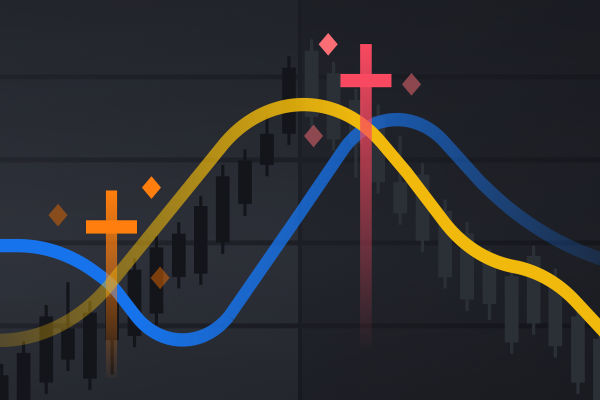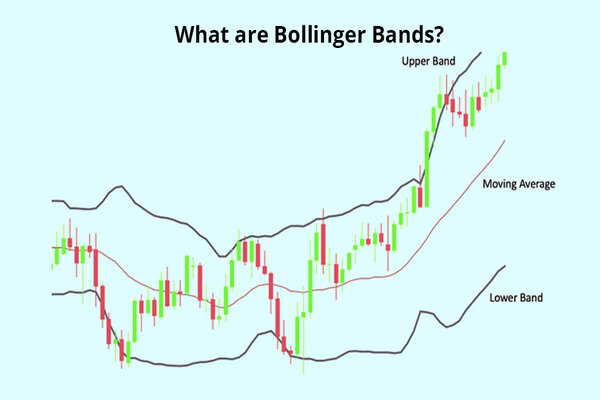There is a super market in the financial field that is full of financial commodities, attracting buyers from all walks of life. And this supermarket has a famous name: the money market.
 The money market (MM), also known as the short-term funding market, is a market for short-term financing by government financial institutions and corporations. It is a large, invisible market for the circulation of money and consists of several sub-markets.
The money market (MM), also known as the short-term funding market, is a market for short-term financing by government financial institutions and corporations. It is a large, invisible market for the circulation of money and consists of several sub-markets.
The market with the largest trading volume is the interbank lending market, which is formed by financial institutions borrowing and lending to each other to solve temporary capital problems. This market can effectively reflect the direction of monetary policy and changes in the supply and demand of funds, and it is an indispensable part of the MM.
The basic position of MM is the bill market, which is the main place for the circulation of bills of exchange, promissory notes, checks, and other valuable instruments. With a wide range of trading entities, the one with the largest issuance and trading volume has to be the Treasury Bill Market. In order to make up for the temporary shortage of Treasury funds and choose to issue short-term bonds made of the market, the government's short-term capital turnover problems play an important role.
In addition, the Securities repurchase market is another place for banks to carry out short-term financing. Banks obtain funds through the sale of securities and then buy back the sold securities at an agreed price in the future, thus solving the problem of liquidity for bank funds as well as providing investors with another channel to enter the correct market.
Finally, there is a large, negotiable time deposit market. This market trades in a type of certificate of deposit issued by a bank that specifies the interest rate for the term of the deposit amount, and large certificates of deposit have attracted many depositors with the advantages of high interest rates and transferability. It is playing an increasing role in the short-term funding market.
In general, MM is one of the important components of financial markets. Its level of development has a profound and long-term impact on the economic development of countries.
Submarkets of the money market
| Submarkets |
Description |
Main trading instruments |
| Interbank Lending Market |
Interbank short-term lending for funding needs. |
Interbank Repo |
| Bills Market |
Trade bills, notes, checks market. |
Commercial Paper、Treasury Bills |
| Treasury Bills Market |
Trade short-term gov't bonds for funds. |
Treasury Bills |
| Securities Repurchase Market |
Institutional liquidity market. |
Repurchase Agreements |
| Large Time Deposit Market |
Meets needs of institutions, large CD holders. |
Large Certificates of Deposit |
Features of the money market
The first characteristic is that the terms of transactions are very short. The shortest can be half a day or overnight, one day, three days, seven days, or 15 days, and the longest will not exceed one year. This kind of short-term capital transaction, also called capital financing, is mainly to meet the economic subject of short-term capital shortage financing needs. That is to say, short-term capital transactions and market activities, mainly to solve a financing problem, cannot be regarded as an investment market.
Because the investment market is relatively long-term, the economic subject in the operation of either enterprises or banks is the government. This daily operation will produce a large number of short-term capital financing needs. There is a part of the funds that is idle and needs to be quickly used out. Can not be idle on the account. As the demand for funds increases, it also often appears that short-term funds This is one of the most abundant and daily phenomena in economic life. It is the demand and supply of short-term funds that this kind of financing needs.
The second characteristic is that the liquidity is very strong; all the financial instruments traded on MM are very liquid. The monetary level of the classification criteria is in accordance with the liquidity of the financial instrument. To divide the standard, the liquidity of the financial instrument also has a strong monetary nature. Because of this, we call it the money market.
The third characteristic is that security is relatively high. Generally speaking, its participants have high creditworthiness and are larger and more formal enterprises and financial institutions, including banks, securities firms, insurance companies, and some other non-financial institutions, in addition to the central bank and the government. So relatively speaking, the creditworthiness of its participants is relatively high, so the security is naturally better.
It is also said to be highly secure because it is less speculative. It is mainly to meet the short-term capital shortage and to solve the liquidity problem. So, relatively speaking, it is not used to speculate for profit. If the speculative value is small, it is the price of this surge and fall. Including this speculative impact, it will be relatively small. This is one of the reasons we say it is more secure.
The fourth characteristic is the trading volume. The market throughput of the transaction volume is very large because it is both short-term and used in our daily lives. For example, interbank lending may amount to tens of billions or even hundreds of billions of dollars per day. At the same time, it involves a wide range of enterprises, various types of financial institutions, governments at all levels, and all institutional investors, including the central bank.
The fifth characteristic is also one of its biggest features, which is that it has a wide range of transaction volume and coverage, and then it is very closely connected with the real economy. For example, the bill market and the CD market are highly related to enterprises. From the point of view of the market between banks and financial institutions, the issuance of bonds is also directly linked to enterprises and the real economy. Including the issuance of Treasury bonds, they are generally more investment-oriented, so they are highly related to the real economy.
Money market funds
| Trait |
Description |
| Type |
Open-ended fund, managed professionally. |
| Portfolio |
Invests in short-term: treasury bills, commercial paper, CDs. |
| Liquidity |
Highly liquid, investors can purchase or redeem shares at any time. |
| Profitability |
Generates income, distributes interest to investors. |
| Risk Level |
Lower risk due to highly liquid instruments. |
| Target Audience |
Appeals to investors seeking liquidity and returns. |
The money market functions
The first is to meet with the government and enterprises to transfer funds for short-term financing needs. As economic subjects, the government and enterprises in modern economic operation have a very large short-term demand for such a shortage of funds.
Especially in enterprises in the whole production, supply, and marketing process, there will often be funds temporarily idle, but more often than not, the funds are in short supply. So, in various forms, to meet the needs of the shortage of funds, And for the government, the treasury revenue is a year of successive income; some expenditure and income are not necessarily matched in time, so there is a need for some short-term fund transfers.
The second is to meet the liquidity management needs of commercial banks and other financial institutions. In the operation of financial institutions, liquidity is one of the most important concerns because it directly determines their ability to pay. If a bank has liquidity management problems, it will face the risk of a run or even collapse.
Similarly, brokerage firms, including insurance organizations, also have a need for liquidity management. Insurance companies have to pay claims, so they can't get all their money into wealth management for asset management. It needs to set aside a certain amount of money for claims. The same is true for brokerage firms, which have to maintain a certain level of liquidity in order to capitalize on investment opportunities.
The strongest need for liquidity management is in commercial banks, because banks operate every day, and every day there will be a surplus or shortage of funds. This bank may have a surplus of funds, and that bank may have a shortage of funds. In the whole banking system, this kind of surplus and shortage coexist; this phenomenon is very common every day. So commercial banks use the interbank lending market, the bill market, and the repurchase agreement market to manage their liquidity.
The third function is to provide a platform for the central bank to carry out financial macro-control.
The fourth function is to generate market benchmark interest rates. The most important thing after the marketization of interest rates is a benchmark interest rate system. If there is no ideal place to form the benchmark interest rate, the benchmark interest rate cannot play the role of the benchmark.
Each country's MM is the place where a country's benchmark interest rate is formed. For example, the UK's Interbank Offered Rate is the benchmark rate for the UK MM, and the US Federal Funds Rate is the benchmark rate for the US MM. China's current main server is the Shanghai Interbank Offered Rate.
After the formation of the benchmark interest rate, all MM interest rates maintain a linkage relationship with the benchmark interest rate. When the benchmark rate changes, all interest rates will change. This linkage of interest rates can determine the role of interest rates in the economic life of continuous transmission, so the MM function is very important to generate the benchmark interest rate.
Difference money market and capital markets
| Characteristics |
Cargo market |
Capital Markets |
| Investment horizon |
Short-term, usually one year or less. |
Long-term, one year or more. |
| Main Instruments |
Examples: T-bills, commercial paper, CDs. |
Assets: stocks, bonds, real estate. |
| Risk Level |
Lower, highly liquid, shorter maturities. |
Risk varies, higher in equities. |
| Investment Goal |
Provides short-term liquidity, fund management. |
Capital, investment, wealth. |
| Trading Venue |
Usually traded in the over-the-counter market. |
Listed and traded on exchanges. |
| Examples |
Treasury bills, commercial paper. |
Stocks, bonds, real estate markets. |
Disclaimer: This material is for general information purposes only and is not intended as (and should not be considered to be) financial, investment, or other advice on which reliance should be placed. No opinion given in the material constitutes a recommendation by EBC or the author that any particular investment, security, transaction, or investment strategy is suitable for any specific person.


 The money market (MM), also known as the short-term funding market, is a market for short-term financing by government financial institutions and corporations. It is a large, invisible market for the circulation of money and consists of several sub-markets.
The money market (MM), also known as the short-term funding market, is a market for short-term financing by government financial institutions and corporations. It is a large, invisible market for the circulation of money and consists of several sub-markets.



